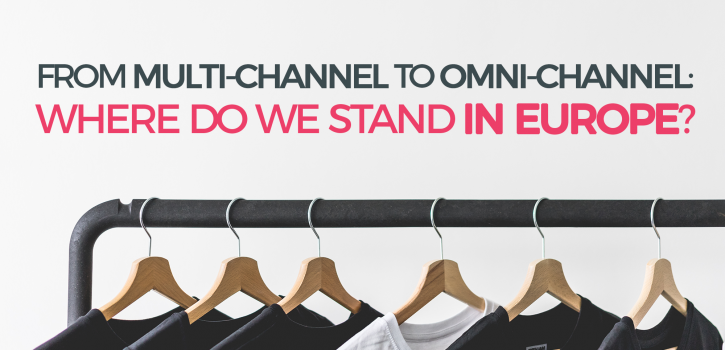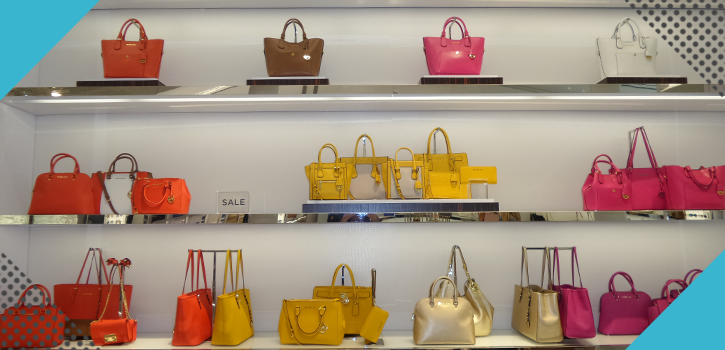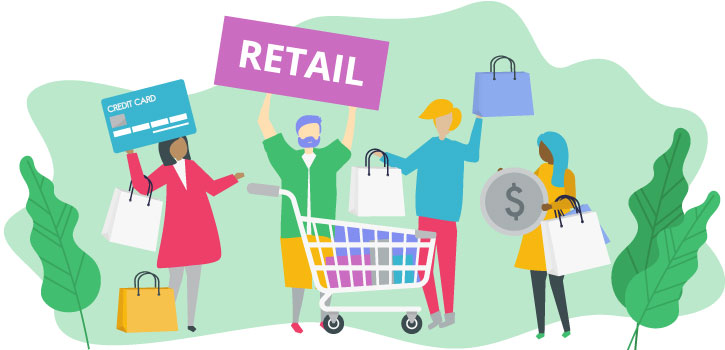In mature markets like the United Kingdom, consumer habits are increasingly diverse. Brands trying to hold on to their market share and attract more new customers face a host of challenges. While certain brands settle for multiplying customer contact points, others have taken it a step further by making the various channels work together (a cross-channel strategy). But today, the way to get the upper hand over the competition is to hold the consumer and their experience at the heart of your model by using an effective omni-channel strategy.
1. Multi-channel: an increasingly unavoidable strategy

Brands operating in Europe have long since adopted multi-channel strategies and multiplied points of contact with their consumers. As for brick-and-mortar businesses, they have realized the importance of investing in digital channels in order to reach more potential consumers, lead by the ready-to-wear fashion sector.
But the opposite path (called click-to-mortar, or web-to-store) is also increasingly popular: today, many pure-players are investing in physical distribution networks in Europe. Amazon and Spartoo have made the leap over the past few years and many companies are thinking of following suit, including Zalando, whose CEO announced a few days ago that he was considering opening physical stores in several European capitals. This allows businesses to offer a more complete range of services to their clientele, but more importantly, it opens up an even bigger target: in the United Kingdom, e-commerce currently represents 17% of retail sales (compared to 8.8% for Europe as a whole).
However, these multiple channels are often managed by different teams who don’t work side by side, and can find themselves in competition with one another. That’s where the need for a cross-channel strategy becomes clear.

2. Cross-channel: multiple channels, one goal
 There is nothing more frustrating than going to a store to buy a product you saw online, only to realize that the price is different because the promotion is only valid online. And why couldn’t brick-and-mortar shoppers receive the same personalized recommendations that are available on an e-commerce site?
There is nothing more frustrating than going to a store to buy a product you saw online, only to realize that the price is different because the promotion is only valid online. And why couldn’t brick-and-mortar shoppers receive the same personalized recommendations that are available on an e-commerce site?
In order to meet expectations borne out of the growth of e-commerce, brands have rolled out cross-channel strategies. Customers want to be able to buy the same products at the same price online and in stores.
Generally, pure-players who establish a physical distribution network understand the stakes of a cross-channel approach, and open physical stores prepared to meet European consumers’ needs from the get-go. In contrast, it’s often much more complicated for a brick-and-mortar to adapt to meet customer expectations.
Yet the advantage of a cross-channel approach lies in the synergies between the different channels: offering the user a unified customer journey. Click & Collect is the perfect example of an effective cross-channel strategy: the customers order their products online and then pick them up in stores. The trend is ROPO: Research Online, Purchase Offline. In the United Kingdom, the vast majority of consumers research products online before going to purchase in stores. Less frequently, consumers try out products in stores but wait to order them online (this is particularly true for ready-to-wear fashion). A great many mass retailers and ready-to-wear fashion brands are now offering a Click & Collect service, which has the advantage of eliminating the competition between the different channels, banking on complementarity being profitable for the business.
3. Omni-channel: the Holy Grail of customer experience!
 The continuous expansion of mobile traffic in Europe has forced brands to rethink their customer journey. Today’s consumers must be able to seamlessly buy what they want, where they want, when they want. This is where the omnichannel approach comes into play.
The continuous expansion of mobile traffic in Europe has forced brands to rethink their customer journey. Today’s consumers must be able to seamlessly buy what they want, where they want, when they want. This is where the omnichannel approach comes into play.
Connected Stores are a perfect example of the end result of this approach: they integrate the advantages of each channel to create an exceptional user experience. There are several technologies that allow you to connect the digital world to the physical world.
Apart from Click & Collect functionalities and providing tablets in stores that display online customer reviews, brands would do well to recognize the importance of salespeople, who represent the true advantage that physical stores have over e-commerce sites. Their advice is highly sought-after by European clientele, and can be improved using data collected from consumers in the online portion of their customer journey. For example, with a customer ID, a salesperson can view the customer’s purchase history and preferred brands and types of products, as well as identify any factors that might prevent the customer from making a purchase, in order to reassure them…
The European Omni-channel Champions
In England, Burberry was already making waves several years ago when it revamped its London flagship store and integrated several digital innovations.
In France, the growth of omni-channel strategies has been slower, but the French brand Gémo has made good headway in digitizing its points of sale, with features like interactive screens that provide recommendations based on body shape, and tablets in the fitting rooms that let you share your look with a community of stylists. The Gémo test store in Chambray-les-Tours (37) saw its sales jump by 50% following the improvements.

In terms of omni-channel marketing, Burger King also had an ingenious approach during its French rollout. In anticipation of long lines, the brand developed a mobile gaming app that encourages the user to protect their menu from a horde of zombies as long as possible in order to unlock a fast pass.
There is an ever-increasing list of examples, which proves the value of implementing an equally ambitious strategy.
A successful omni-channel strategy may seem like a burdensome undertaking in mature markets like those of European countries, and must be skillfully implemented. Brands need to have a perfect understanding of what different types of customers demand. Furthermore, creating complementarity between the different parts of a business (marketing, CIO, sales force…) may sometimes disrupt the traditional organization of these elements. Variable compensation and commission systems can be upset due to the difficulty of determining exactly how much of sales revenue can be attributed to a particular department of the business, since the departments are required to truly work together instead of in competition with one another. But this kind of strategy can prove to be extremely lucrative, since it is driven by customer experience, creating true brand loyalty and unparalleled customer satisfaction.







